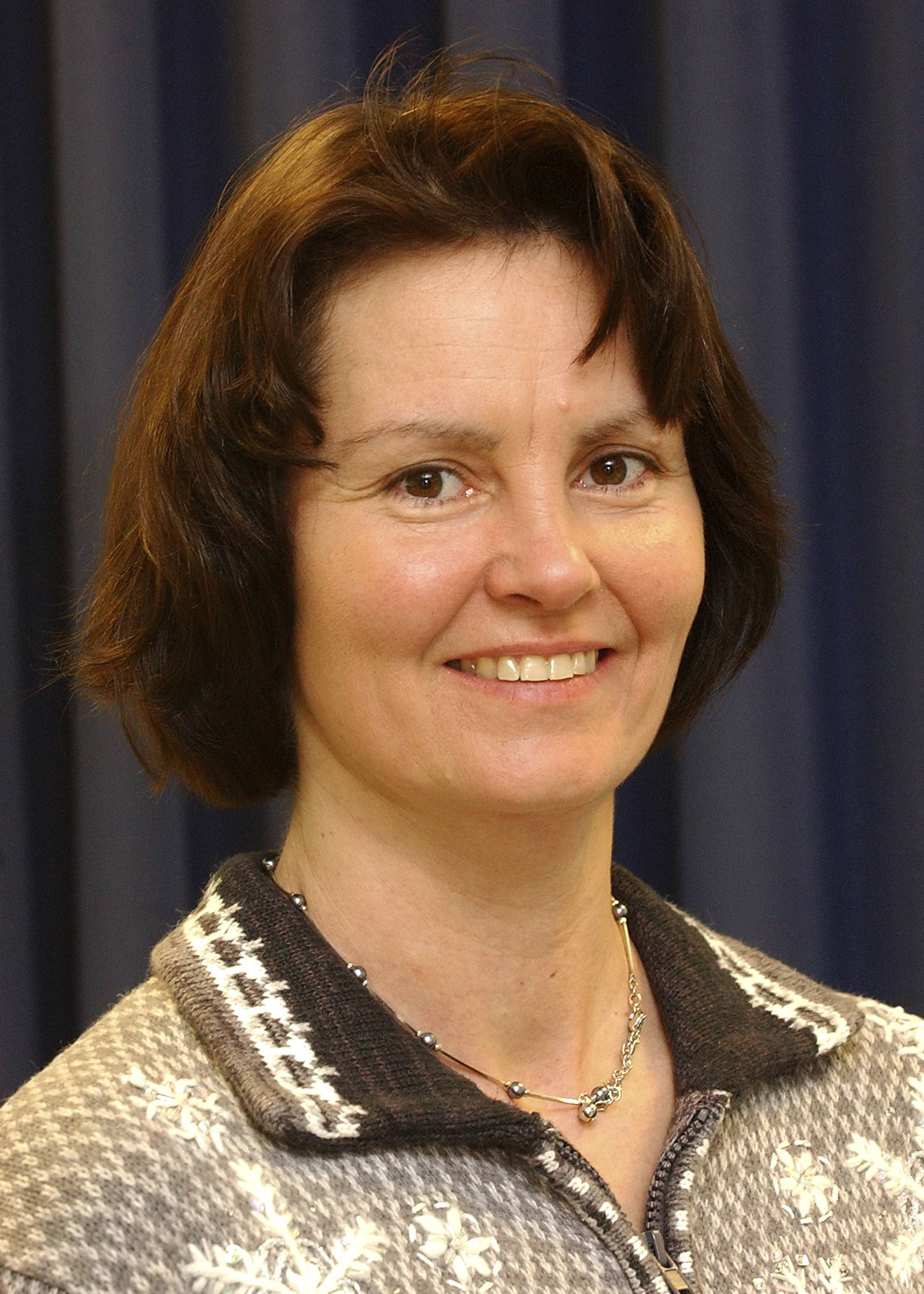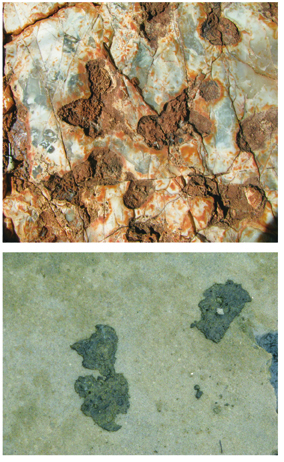Geobiologist Noffke Reports Signs of Life that Are 3.48 Billion Years Old
 Nora Noffke
Nora Noffke
 Microbial mat chips are one example of the MISS that were discovered in the 3.48 billion years old Dresser Formation, Pilbara region, Western Australia. Such mat chips are a couple of centimeters in size. The upper photo shows that the fossil microbial mat chips have a clover-like shape similar to mat chips from modern coastal environments shown above. Photos by Nora Noffke
Microbial mat chips are one example of the MISS that were discovered in the 3.48 billion years old Dresser Formation, Pilbara region, Western Australia. Such mat chips are a couple of centimeters in size. The upper photo shows that the fossil microbial mat chips have a clover-like shape similar to mat chips from modern coastal environments shown above. Photos by Nora Noffke
By Jim Raper
Nora Noffke, an Old Dominion geobiologist who has won international recognition for research establishing microbially induced sedimentary structures (MISS) as evidence of earliest life on Earth, is the lead author of a paper in the journal Astrobiology that documents the discovery of 3.48-billion-year-old MISS, the oldest ever reported.
Sedimentary structures that Noffke, and her colleagues have discovered in the Dresser Formation, Pilbara, Western Australia, are believed to be among the oldest evidence ever found of life on Earth. The structures - due to their age - might also provide scientists with clues about geologic evidence of microbial life that exists, or might have existed, on Mars.
Her research in South Africa and Australia, published over the past seven years, has turned up geological samples supporting her case that the mats woven of tiny microbes we see today covering tidal flats were also present as life was beginning on Earth. The mats, which are colonies of cyanobacteria, can cause unusual textures and formations in the sand beneath them. Noffke has identified 17 main groups of such textures caused by present-day microbial mats, and has found corresponding structures in geological formations dating back through the ages.
Previous fieldwork by Noffke and others had turned up MISS ranging to almost 3.2 billion years old, so the findings released in the Astrobiology article on Friday, Nov. 8, advance the age of the earliest MISS by 300 million years.
The article's authors also include Daniel Christian, a graduate researcher at Old Dominion; David Wacey, Centre for Microscopy at The University of Western Australia; and Robert M. Hazen, of the Geophysical Laboratory at Carnegie Institution of Washington (D.C.).
Establishing the rise of life during the Earth's early Archean period - this goes back to 4 billion years ago - is challenging. The planet's oldest sedimentary rocks, where signs of life can be found, not only are rare, but also experienced alteration by hot, hydrothermal water circulating through the rocks, and by tectonic deformation. The Pilbara region of Western Australia is known as one of the famous windows providing a glimpse into the early evolution of life. Here, stromatolites and microfossils of bacteria have been detected, and geochemical markers suggest the existence of specific prokaryote activities.
In an invited article published in the September issue of the Geological Society of America's journal, GSA Today, Noffke and Stanley Awramik, a University of California, Santa Barbara, scientist who is an authority on stromatolites, review MISS and their taxonomic affiliation with stromatolites.
Stromatolites often look like head-shaped boulders and are today found in hypersaline ocean waters. The stromatolites are stacks of many layers, each composed of fossil microorganisms and their extracellular secretions. Carbonate precipitation that takes place during the lifetime of a stromatolite is essential to the building process.
For decades now, scientific findings have promoted stromatolites as fossilized evidence of the microscopic first life on Earth. But Noffke's research has opened the new avenue in the study of early life by focusing on MISS, which do not derive from carbonate precipitation.
"The signal of early life forms has been preserved more clearly in MISS," said Noffke, who described the structures as the older relatives to stromatolites. Also, she noted that whereas there are no modern examples for the stromatolite morphologies that date to early Archean time, "The MISS are basically the same today as they were then." Noffke and her colleagues in the field of early life research see MISS as complementing stromatolites and microfossils in the geological record.
The ODU scientist and the co-authors of the Astrobiology article describe MISS from the ancient coastal sabkha (an evaporate playa) preserved in the Dresser Formation. Macroscopic and microscopic structures were found. Raman analysis points toward a biological origin of carbonaceous matter found in the structures.
The authors note that the Dresser Formation MISS strongly resemble the MISS from other, younger rock successions. A very similar occurrence constitutes the ecosystem preserved in the 2.9 Ga Pongola Supergroup, South Africa. They also describe how MISS in their primary stages can be seen today in the sabkhas of North Africa and in tidal flats worldwide.
MISS are a target for the exploration of Mars by rovers. Mars includes large playa settings very similar to that of modern Earth and fossil equivalents such as in the Dresser Formation. Thanks to the Curiosity rover, we may soon know if MISS indeed occur, providing information about ancient or present life on Mars.
In 2007, Noffke was elected a Fellow of the Geological Society of America in recognition of her research establishing MISS as evidence of the earliest life on Earth. She also won the 2007 James Lee Wilson Award of the Society of Sedimentary Geologists, which is given annually to recognize international excellence in marine geology by a young scientist. In 2010, her work was recognized with the GSA Geobiology Division Award for Outstanding Contribution in Geosciences.
Since 2009, Noffke has been a visiting scholar with the Carnegie Institution of Washington, where she works with Hazen. Hazen is well known for his scientific investigations concerning the origin of life.
Her latest work was supported by the National Science Foundation (NSF) Paleobiology and Sedimentary Geology program, the NASA Astrobiology Institute, the NASA Exobiology and Evolutionary Biology Program, and the Deep Carbon Observatory and the Carnegie Institution for Science.

